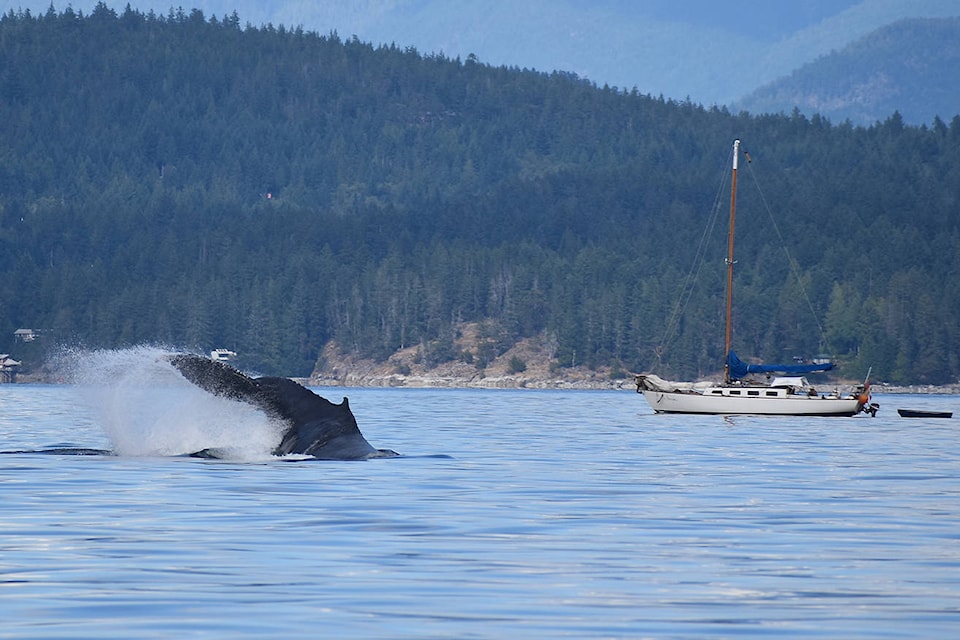A friend of the family who crossed the Salish Sea by ferry from Vancouver to the Island last weekend commented to me that he had seen a humpback whale while on the crossing.
It was no big deal for him because humpback whale sightings are far from rare on the country’s east coast.
In fact, thousands of them return to Newfoundland each summer to feed on the abundant capelin, krill and squid along that coastline.
The sight of them fully breaching out of the water in front of icebergs that are heading south from Greenland at the same time is a great draw for tourists from around the world.
But seeing humpback whales in the waters off eastern Vancouver Island has been extremely rare for generations after many of them were slaughtered during the whale hunts.
By the time commercial whaling in B.C. waters and elsewhere was finally ended in the 1960s, there were as few as 1,500 humpbacks left in the entire north Pacific Ocean.
In fact, Nanaimo was home to one of the whaling stations that hunted and processed the whales.
The whaling company Pacific Whaling built a station at Piper’s Lagoon in Nanaimo in 1907 and, that year, beached 97 humpback whales at nearby Shack Island.
Soon after, in 1909, most of the commercially viable humpback whales in the waters around central Vancouver Island were slaughtered and the station at Piper’s Lagoon was dismantled and moved to the Queen Charlotte Islands, now called Haida Gwaii.
But their numbers have rebounded since the end of the commercial hunt and it’s now estimated that there are more than 20,000 humpback whales in the north Pacific Ocean, with increasing numbers of them coming into the Salish Sea to feed all the time.
About five years ago, I talked to Simon Pidcock, the owner of Cowichan Bay-based Ocean EcoVentures which offers whale-watching tours.
He said he came across the first humpback whale he had ever seen in the area in 1997, and when I talked to him for the story I was working on at that time, he told me he saw approximately 70 individual humpback whales in the strait on a regular basis, and I’m sure that there are a lot more of them now.
“We seem to see more and more of them every day,” he said. “People usually come to us to see killer whales and we’ve become well-known for that over the years, so having the humpback whales return to local waters is an added bonus and some customers are now even coming strictly to see these whales.”
While I think it’s great that the humpback whales are making a comeback in local waters, I also fear for them as well.
The Salish Sea has changed considerably since humpback whales were plentiful here many years ago, and, despite the fact that they won’t be slaughtered for their oil anymore, the local waters are more dangerous for these cetaceans for other reasons in the modern age.
The Salish Sea now hosts many large and fast ships, and it’s not uncommon for whales to be struck and killed by them.
We’re also seeing more whales getting caught in fish nets and gear, which can be a death sentence if they can’t free themselves.
And, of course, there is all the pollution being dumped into the water that is known to be slowly poisoning the resident killer whale populations in the heavily populated Puget Sound area.
Too much time spent in the area by returning humpback whales could be hazardous to their health as well.
But it is good to see them here again and, hopefully, if they can surmount the new challenges they are facing, watching their magnificent breaches could become as common as seeing the many orcas that are in the area.
robert.barron@cowichanvalleycitizen.com
Like us on Facebook and follow us on Twitter
